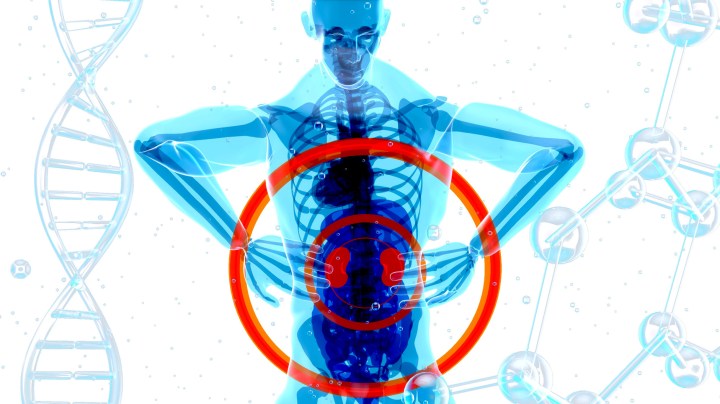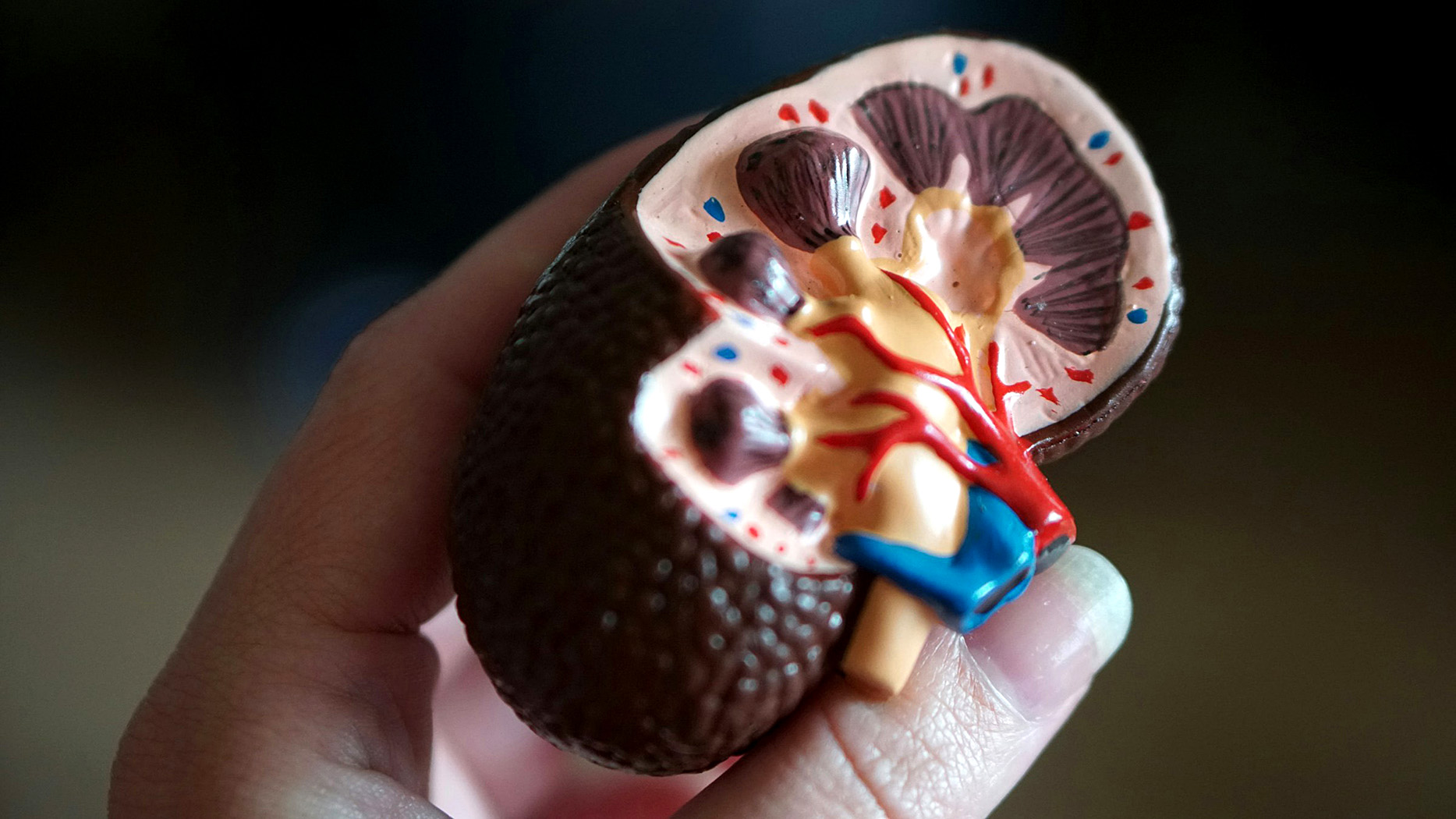SPOTLIGHT
Chronic kidney disease rates have dropped in people with HIV, but late diagnosis remains a serious problem

Spotlight unpacks the complex effect that HIV has on the kidneys, how HIV and chronic kidney disease evolved after the roll-out of antiretroviral treatment, and what the situation is now in the country for people living with HIV and chronic kidney disease.
Chronic kidney disease (CKD) is damage to the kidney that occurs over time, normally at least three months, which affects its ability to filter waste products and get rid of fluid properly, Dr Nina Diana tells Spotlight. She is a consultant nephrologist based at Charlotte Maxeke Johannesburg Academic Hospital and lecturer at Wits University.
CKD occurs when the kidney stops working properly, sometimes due to a physical injury, certain medications, an infection or certain medical conditions, explains Dr Nicola Wearne, an associate professor and head of the nephrology and hypertension clinical unit at Groote Schuur Hospital.
The disease is classified in stages – with stage one being the mildest and stage five the most severe. The most common way to determine whether someone has chronic kidney disease and determine its stage is to measure the glomerular filtration rate (GFR).
Someone with normal kidney function, says Wearne, has a GFR greater than 90. She explains that when the GFR drops below 90, it can indicate stage one chronic kidney disease. A GFR of between 90 and 60 is seen as stage two, 60 to 30 indicates stage three, and 15 to 30 is stage four. When the GFR drops to below 15, someone has stage five disease.
“Once you get to stage five, you have end-stage kidney disease… really the way you can think about it is you have 15% or less of your kidney function left. So not very much,” she says.
Wearne says there are several risk factors for developing chronic kidney disease, including high blood pressure, diabetes, tuberculosis, or other opportunistic infections.
Large decline in HIV-associated nephropathy
HIV is also a risk factor. When someone is living with HIV they can develop HIV-associated nephropathy. Wearne says this occurs when the virus enters the body and starts replicating everywhere, including in the kidneys. The virus gets into the small filtering units (the glomeruli) in the kidneys and causes them to collapse.
The condition was essentially a death sentence and progressed to end-stage rapidly, but that was before antiretroviral therapy – which can suppress HIV replication – became widely available.
“In the beginning [of the HIV epidemic] there were loads of people with HIV-associated nephropathy because we didn’t have antiretroviral therapy and the mortality was very high. You can go to end-stage kidney disease, less than 15 GFR, within three months,” Wearne says.
She says that over the past 16 years she’s noticed a big, stabilising change in chronic kidney disease in people living with HIV. She heads up the HIV renal clinic within the renal unit at Groote Schuur Hospital. The clinic was established in 2008 and since then Wearne says she has been seeing less HIV-associated nephropathy, and for those who do develop the condition, they tend to stabilise on HIV treatment. For those with end-stage chronic kidney disease, people living with HIV are also being successfully transitioned to dialysis and transplant.
“However, you do need people to stay on the antiretroviral therapy, and there’s a subgroup of people who also continue to have disease despite antiretroviral therapy. So, it hasn’t gone away [completely],” Wearne adds. She says genetics can also affect someone’s risk of the condition.
Transplant breakthrough
South Africa made medical history when the first kidney from a donor who had HIV was transplanted into another patient who was living with HIV at Groote Schuur Hospital in Cape Town in 2008. Professor Elmi Muller, who led the transplantation programme, tells Spotlight the programme was brought about in response to a “huge healthcare crisis with HIV and renal failure”.
Before this, says Muller, who is now the dean of the Faculty of Medicine and Health Sciences at Stellenbosch University, people living with HIV with end-stage kidney disease did not qualify for dialysis and there was nothing else that doctors could offer them. These patients, at that time, were not considered to be good kidney transplant candidates; and because dialysis is a scarce resource in the public health sector it was “ring-fenced” for people who were considered good candidates.
Muller sought to increase access to kidney transplants for people living with HIV through a programme whereby the kidneys of brain-dead donors who had HIV were donated to people living with HIV who had end-stage kidney disease. About 60 of these transplants were carried out at Groote Schuur. Overall, the transplant recipients had good outcomes, which helped change views on such transplants around the world.
Now, according to Muller, there is no restriction on the organs people living with HIV can access, and they are considered good transplant candidates if they’ve been on antiretroviral therapy for at least three months and HIV is suppressed in their bodies.
The role of tenofovir
Another HIV-related complication is the use of the drug tenofovir. Though safe for most people, it can in rare cases cause kidney damage. Tenofovir forms part of the three-drug combination that makes up the standard HIV treatment in South Africa. It is taken by well more than four million people in the country and even very rare side-effects may therefore affect quite a few people.
Because of this risk, the Southern African HIV Clinicians Society recommends that people living with HIV are screened for kidney disease when starting antiretroviral therapy, and then again at three months, six months, and then six to 12 monthly after that. Monitoring is done through a blood test, which is sent to a laboratory to determine the levels of creatinine in the blood, using a formula that determines the GFR. A urine test is also done, either using a dipstick or lab test to determine urine protein levels. Nurses in primary healthcare clinics are able to perform urine tests using dipsticks and draw blood to send for testing.

Chronic kidney disease occurs when the kidney stops functioning properly. (Photo: Robina Weermeije / Unsplash)
Diana tells Spotlight that for those patients who are at high risk for chronic kidney disease or show signs of kidney damage, the risk can easily be managed by choosing first-line ARVs that are safe for people living with HIV and kidney disease. The risk can also be mitigated by changing the existing ARVs of a patient or simply adjusting the dose.
Lack of data
Wearne says there is not a lot of data looking at the prevalence of chronic kidney disease in people living with HIV, but there was a systematic review and meta-analysis published in 2018. It found that the overall prevalence of chronic kidney disease in people with HIV globally is 6.4%, with the highest rates of about 8% seen in sub-Saharan Africa.
The lack of data has a lot to do with how chronic kidney disease is defined in studies, since not all studies classify chronic kidney disease the same way, making it difficult to compare studies.
South Africa does, however, have data from our renal registry that was last published in 2021, according to Wearne. The registry indicates in 2019 there were about 10,000 patients on dialysis in the country, and among those just under 1,000 were living with HIV. This means about 10% of people on dialysis in the country are living with HIV.
Data from this registry includes patients from both the private and public healthcare sectors.
The report for 2020 showed the number of people being treated with kidney replacement therapy – dialysis or a transplant – was just more than 8,700, but cautioned that the lower numbers were likely due to disruptions caused by the Covid-19 pandemic.
When asked about the prevalence in the general population, Diana refers to the same problem as Wearne, saying there “hasn’t been an extensive study with a uniform definition”. She does, however, refer to a 2018 systematic review published in the British Medical Journal that assessed the chronic kidney disease burden throughout Africa. It cites one meta-analysis showing the prevalence of chronic kidney disease in sub-Saharan Africa at 13.2%.
‘Prevention, prevention, prevention’
Because people do not generally develop symptoms until the disease is in its end stage, screening is vital in preventing or catching chronic kidney disease early.
“Prevention, prevention, prevention – that’s where we make the biggest impact,” Wearne says.
Screening is the same for everyone, whether they have HIV or not, according to Wearne. It involves getting a blood test to check your GFR levels and testing your urine for the presence of protein and blood using a dipstick. Regularly monitoring a patient’s blood pressure and making sure any pre-existing conditions are under control is also necessary. For those living with HIV, checking viral load levels (the amount of HIV in the blood) and CD4 counts (reflecting the state of the immune system) regularly and ensuring HIV treatment adherence is essential.
Wearne says there needs to be more screening efforts at a population level.
“It doesn’t take a genius to work out that we need to be going out at a population level… like the [Discovery] Vitality Check, that’s what we need. Unfortunately, we don’t have that [in the public sector]. And we’re much more fortunate in more urban areas but rural areas really are neglected on that front,” Wearne says “We need to be spending much more time in any way we can about educating people, about getting their blood pressure checked, check for diabetes, check for HIV, check to see if you’ve got any protein in your urine.”
Diana agrees, saying healthcare providers could be doing better with screening for chronic kidney disease and picking it up earlier. However, she cautions that this can be influenced by factors such as a lack of staff and sufficient resources to test kidney function at some healthcare facilities, or not having a laboratory close by to send blood tests to.
“I think it’s a bit more complicated than just saying people aren’t doing screening. I think there’s a lot of mitigating factors,” she says.
“It’s not only about not getting to stage five, but also about having good quality of life [for the patient]. So, identify chronic kidney disease early, make the diagnosis of the underlying cause, institute treatment to prevent progression, and that is not possible if you crash-land with chronic kidney disease stage five already.”
How CKD is treated
Overall, if people living with HIV take ARV therapy as prescribed they will receive the same treatment as someone with chronic kidney disease who is not living with HIV, according to Wearne.
In the public health sector, she explains, stages one and two can be managed at a primary healthcare level while from stage three onwards a patient needs to be seen by a nephrologist. Treating stages one and two involves making sure no additional damage is done to the kidneys. Generally, this comes down to making sure patients who have other medical conditions like high blood pressure, diabetes and HIV have those conditions under control and are not taking any medications that can damage their kidneys.
Once the disease reaches stages three and four, a nephrologist will need to step in to treat the patient. And by stage five, the patient will require dialysis and/or a kidney transplant.
According to Diana, because chronic kidney disease can have so many different causes, the exact treatment will depend on the underlying cause of the damage.
“If it’s a drug, you would stop or change the drug. If it was an infection, you treat the infection. So, it [treatment] would depend on what the underlying cause is,” she says. “The aim of treatment is often not to recover to normal, but to keep at baseline. So, to recover as much kidney function as we can and then to maintain your kidney function and your GFR for as long as possible. And there’s no magic treatment.”
Dialysis versus transplant
For those with end-stage kidney disease, dialysis is not a permanent fix and there are limited slots available in the public healthcare sector.
“Clearly we haven’t got enough dialysis slots, so people are being turned down for dialysis because we don’t have the space available… if I had a wish list, I’d want to offer dialysis to many more patients,” Wearne says.
The only places that public sector patients can access dialysis in the Western Cape, according to Wearne, is at the renal unit in Groote Schuur Hospital, Vredenburg Hospital, Tygerberg Hospital and a small unit in George. She says that between the unit at Groote Schuur and Vredenburg there are about 170 slots for dialysis.
“Once we are full, unless somebody is transplanted or dies, there is no space for you. We generally have to keep transplanting. We do somewhere between 55 and 65 transplants a year [at Groote Schuur]. So, we keep shifting everything over.”
When asked what the outlook is for someone with end-stage chronic kidney disease, whether they are living with HIV or not, Muller says it’s variable but when looking at the data the prognosis of long-term survival is better with transplant than dialysis.
“We have to look at quality of life and we have to look at morbidity and I think on dialysis people have more [higher] morbidity, they struggle with the side-things – their vascular access, their infections, not feeling well, blood pressure issues – those things are very difficult to fix,” she says. “Your prognosis on dialysis, it’s very difficult to say that with dialysis you will live five years [and] with the transplant you will live 10 because there are other factors that will influence it. But if you look at big data in the field, prognosis on dialysis is worse than with a transplant.”
It is therefore crucial, Muller says, to get the balance right between investing in scaling up dialysis capacity and investing in transplantation.
“I personally think we are getting the balance wrong. More money, more funding and more effort needs to go into transplantation as a treatment modality for any renal failure and less for dialysis,” she says.
“Dialysis should be seen as a bridge for transplantation, and that’s not happening for various reasons,” she says. “I think we’re not doing enough to create opportunities for people to be either living or deceased donors, and then the dialysis industry is just growing and growing and growing.” DM
This article was published by Spotlight – health journalism in the public interest. Sign up to the Spotlight newsletter.

















Comments - Please login in order to comment.